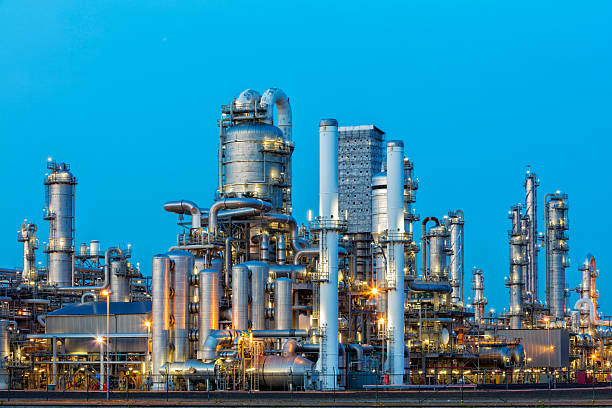What Are The Benefits Of Biocides?
Kategori: Allmänt

A biocide is an chemical substance or microorganism that is intended to kill the harmful or harmless nature of, or limit the growth of potentially harmful organisms. Biocides are described as "a diverse group of poisonous substances that are used to manage organisms that are harmful to human or animal health, or may cause damage to products made from natural or synthetic materials, including preservatives, insecticides, disinfectants, and pesticides."
When discussing biocides, it's crucial to differentiate between the biocidal active ingredient as well as the biocidal product. Even though biocidal active ingredients are mostly chemical compounds, microorganisms can also be present (e.g. bacteria). Biocidal products contain some or all active biocidal substances and other non-active coformulants that guarantee the efficacy of the final product as well as the desired pH and viscosity, color and smell, among others.
What is the use of biocides? And what are the benefits?
In many industrial, commercial and manufacturing processes, microbiological activity control plays an important role. Chemical biocides are vital to keeping water conditions in good condition all the time. This ensures that systems operate effectively and safely.
This is achievable through the use of carefully selected biocide manufacturers as well as dispersants. These are suitable for many cleaning and hygiene-related activities as well as process and industrial water treatment processes that require efficient microbiological activity control.
Biocides are used for many different purposes for example:
1. Microbial deposits
2. Under slime down payments, bio-corrosion happens
3.Excessive use of cooling fans causes energy loss
4.Circulation pumps, inefficient heat exchangers
What are the advantages?
Biocides were created to be harmful to microorganisms such as bacteria and mold. The right concentration of biocides can be efficient and produce a rapid result in areas where metalworking fluid circulates well. If there are bacterial issues biocides are simple to employ, but they can also compensate for system flaws, and are readily accessible.
The element chlorine (sodium Hypochlorite).
Chlorine is among the most widely used biocides, owing to its cost-effectiveness and ease of availability. Although it is the most affordable option but its oxidative and volatile nature could cause damage to pipes made of metal. When not fed at the proper dosages, it has been proven to cause corrosion in water systems for domestic use. cooling towers and piping. Chlorine can also produce NTM (trichloronitromethane), a carcinogenic byproduct.
Chlorine Dioxide
Chlorine dioxide, a chloride-based chemical, is utilized for industrial and household water treatment. Its capability to work in any kind of makeup water makes it an appealing choice. It can penetrate both the planktonic and sessile levels of biofilm. Although it is less aggressive than chlorine however, its stability in hot water is not ideal. Another issue is that the chemical might need to be made on-site through the generator.
Stabilized Bromine
Stabilized bromine can be used to disinfect cooling towers. It is also a great choice for spas or other locations with warm water. Although it's more expensive than chlorine, it is more stable at higher temperatures. It has a less unpleasant smell and is less irritating to skin. It dissolves slowly and works within a greater pH range, which allows you to keep water quality good for longer time.

sbo bet säger:
Bloggadress: http://https://aselah-ejabat.com/index.php/user/beamdebt
For most recent information you have to pay a visit world-wide-web and on web
I found this website as a best web page for latest updates.
TIRUMUIO säger:
Bloggadress: http://https://www.ivisa.com
I don't even know how I ended up here, but I thought this post was great.
I don't know who you are but definitely you're going to a famous blogger if you aren't
already ;) Cheers!
israel combination tours säger:
Bloggadress: http://https://www.toursinturkey.com/ba_combination-tours/israel/
I delight in, result in I discovered exactly what
I was looking for. You've ended my 4 day lengthy hunt!
God Bless you man. Have a great day. Bye
dental veneers istanbul säger:
Bloggadress: http://https://www.dixihealth.com/dental-veneers-istanbul-turkey/
I am genuinely thankful to the holder of this web page who has shared this enormous paragraph
at here.
jordan tour price säger:
Bloggadress: http://https://www.toursinturkey.com/jordan-tours-travel-packages-cost-price/
If you are going for best contents like me, just pay a
visit this website daily for the reason that it provides
feature contents, thanks
dental implants istanbul säger:
Bloggadress: http://https://www.dixihealth.com/dental-implants-istanbul-turkey/
What's up, its pleasant piece of writing on the topic of media print, we all know media is a
great source of data.
greece travel packages säger:
Bloggadress: http://https://www.toursinturkey.com/greece-tours-travel-packages/
There is certainly a great deal to learn about this topic.
I like all the points you made.